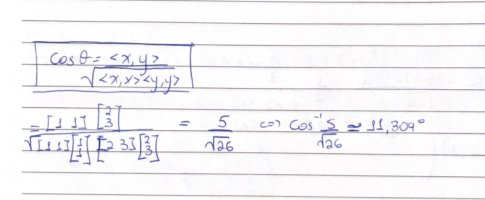Hi everyone! I have an assignment that really confused me.
Define an appropriate matrix A of the corresponding inner product [math]x^T A y[/math] that sets the angle between the vectors [math]x=[1,1]T[/math] and [math]y=[2,3]T[/math] to 60 degrees.
can someone help me out with this?
.
Define an appropriate matrix A of the corresponding inner product [math]x^T A y[/math] that sets the angle between the vectors [math]x=[1,1]T[/math] and [math]y=[2,3]T[/math] to 60 degrees.
can someone help me out with this?
.

